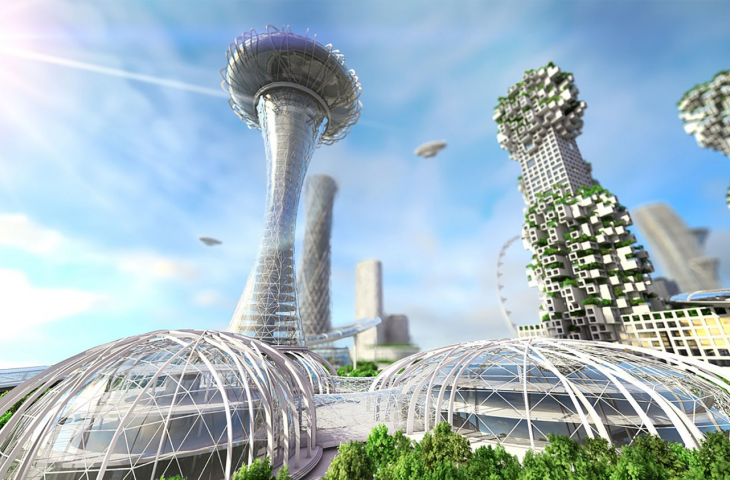Concrete jungle or sea of green? What future awaits Polish cities in 2050?
In the face of a rapidly expanding urban fabric, increasingly densely filled with new construction projects, as well as progressive climate change, the effects of which are being felt more and more acutely, the Saint-Gobain Group presents a vision of the future of Polish cities and the changes that should take place in their structure over the next 30 years, in line with global megatrends.
Polish Cities of the Future 2050
© Saint-Gobain Group
The common image of 21st century cities in pop culture is usually based on similar patterns: they are densely built, crowded, bleak, and civilization is in decline. Fortunately, however, reality differs from the fantastic visions of creators - we are increasingly turning to nature, turning concrete structures into green zones and making efforts to halt galloping climate change.
And it is about the twilight of the all-encompassing "concretosis" in the latest episode of the series "Polish Cities of the Future 2050" that Karol Klos, president of the publishing house "Industry Forum" and also an expert in the window industry, talks about. The "concretosis" of the title brings to mind a disease digesting the urban fabric, which can be disastrous for human health and well-being, and is high on the list of issues to be wary of in modern construction. Structures in which vegetation and building form an integral whole, green roofs, recreational areas and squares - this is what modern architecture proposes.
- Greenery gives us better living comfort in terms of temperatures, air quality, but also in terms of being in the city after working hours - when we have time to live. According to my idea, the future (...) is green, certainly more conscious and more sustainable," says Karol Klos in an interview.
Polish Cities of the Future 2050
© Saint-Gobain Group
Among other topics,the interview touches on the fate of housing and "concrete houses." We find out, for example, what our interviewee thinks popular apartment blocks will look like in 30 years and how to use their potential more efficiently. According to Karol Klos' vision, in the case of the "big plate" the changes will certainly not take the form of a revolution, but a gradual improvement that will make the massively built since the 1960s. The blocks of flats will be transformed into places that are more useful, favorable to residents and the planet, open to nature, with high energy standards, equipped with photovoltaics and systems for obtaining and accumulating heat, such as from solar energy, making them cheaper to maintain and more environmentally friendly. Modernization will require not only the facade and woodwork, but also the interiors of the units. And although the road to achieving the desired goal seems long, the mission is not unfeasible, if only because of the existence of financial programs to support such activities.
Polish Cities of the Future 2050
© Saint-Gobain Group
Inaugurated on the initiative of the Saint-Gobain Group this August, the "Polish Cities of the Future 2050" project is one of the elements of the Group's long-term strategy based on the overarching goal of "Making The World a Better Home." The core of the project is a series of conversations with respected architects, specialists and academics, led by editor Dariusz Bugalski, a former longtime journalist at Radio Three and creator of the K3 podcast. Invited to talk about the future of Polish cities, the experts discuss what kind of spaces we will work, learn and live in. They also address issues of communication in the cities of the future, as well as ecology and the environment.
- A common mission to make people aware that modern construction should put people, their comfort and sense of security first, and at the same time is not indifferent to the fate of the planet, on the contrary - it contributes to improving its condition, is a priority for us, says Benedykt Korduła, marketing director of Saint-Gobain Glass Poland. - The glass solutions offered by our company fit perfectly into this mission, especially the improvement of the energy balance of buildings and the access to natural light they provide to users. Windows or facades without glazing would lose their meaning.
The series will culminate in a special report on Polish cities in 2050, developed by the Saint-Gobain Group together with the project's partner, the Polish Society for Future Studies. Here you can find details about the project and all the interviews with experts published so far, including an episode titled "The Twilight of Concrete Cities. "Twilight of Betonosis" starring Karol Klos.
The project is co-created by brands belonging to the Saint-Gobain Group including Saint-Gobain Glass Polska and Glassolutions - a leading supplier of premium glass for architecture and construction.
Polish Cities of the Future 2050
© Saint-Gobain Group
For more information, visit the company 'sSaint-Gobain Glass page on theAiB portal.

























